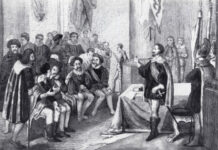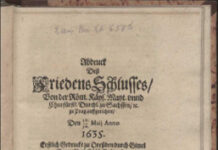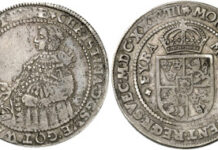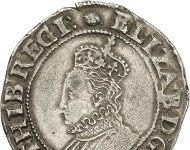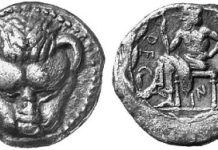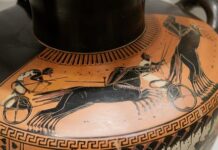Ursula Kampmann
The Thirty Years’ War – Part 13 (1633-1634)
Religion was of secondary importance in the Thirty Years’ War. It was all about power and money. Ursula Kampmann brings that era alive. Today, the war coincides with the assassination of Wallenstein.
The Thirty Years’ War – Part 14 (1634-1635)
Religion was of secondary importance in the Thirty Years’ War. It was all about power and money. Ursula Kampmann brings that era alive. Despite the deaths of the Winter King, Gustavus Adolphus and Wallenstein, the war went on as if nothing had happened.
Human faces, part 39: The price of power
Possessing colonies with vast resources of silver, Spanish king Philip II could have helped his kingdom to enormous economic prosperity. But even the largest treasure of silver could not realise Philip’s power-hungry fantasy of proselytizing half of Europe.
The Thirty Years’ War – Part 15 (1635-1637)
Religion was of secondary importance in the Thirty Years’ War. It was all about power and money. Ursula Kampmann brings that era alive. Today, France is in the thick of the action.
The Thirty Years’ War – Part 16 (1636-1640)
Religion was of secondary importance in the Thirty Years’ War. It was all about power and money. Ursula Kampmann brings that era alive. The war performs another volte-face: now, it is the Protestants’ move.
Human faces, part 40: The pirate queen
“The Virgin Queen” is certainly the most well-known epithet of Elizabeth I. We thought, however, that “Queen of the Pirates” would be equally befitting as English privateers belong to Elizabeth’s story just as much as her virginity.
The Thirty Years’ War – Part 17
Religion was of secondary importance in the Thirty Years’ War. It was all about power and money. Ursula Kampmann brings that era alive. The war grinding on for a few years before it was finally over was only due to the fact that all parties involved intended to improve their negotiating position.
The Thirty Years’ War – Part 18
Religion was of secondary importance in the Thirty Years’ War. It was all about power and money. Ursula Kampmann brings that era alive. Even when all belligerents had already gathered to negotiate, the war was still raging – on the battlefields as well in the backrooms.
Sicilian Mosaic Part 2: Dankle-Messana and Rhegion
Similar pictures shown on Greek coins from various cities may have to do something with a city adopting the coin imagery from its mother city. Here you will find information about the numismatic history of Dankle-Messana and Rhegion of Archaic times.
Sicilian Mosaic Part 3: The tyrant Gelon
Numerous peoples and groups shaped the history of Sicily. In today’s part, you will read about the first problems the Greek settlers faced: their own tyrant …



